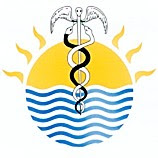I often meet with workshop delegates who have little or no experience of actually touching their patients/clients so we have to start slowly and build up. The first exercise I ask them to do is to gently place both middle finger pads on the partner's leg on some area where I know there is a sparsity of acupoints - the hands are app. ten cms. (four inches) apart. Just see what happens! They can close their eyes, concentrate on life, universe or everything or just think nothing. It is amazing how many different reactions we get after holding two non-descript points for about two minutes (thats a long time if you arn't used to touching!) Some of them say that there's an increase in heat under the fingers, some say that there is a kind of buzzing or some other kind of senstaion. I also ask what the model is feeling. I then proceed to go to touching (just touching mark you- not massaging or stimulating in any way) two acupoints on the same meridian (although I don't tell them that) and see what the difference is! We then do some stimulating massage on these points and again see the diference.There are scores of disparate sensations to be had.
I mention this to try and prove a couple of things. Firstly there is no right or wrong in the sensation that you will have - we are all different. Secondly - less is more!! Clinical acupressure is not about attacking the acupoint like a bull in a china shop as sometime occurs in both acupuncture and some types of reflexology. The secret in treating just one point (without balancing) is to place the finger on the point slowly, then initially do some gentle circular movements and trying to tune in to what the point is actually telling you. For instance if you wanted to try to ease a chronic condition of muscle imbalance - one of the main points would be LR 3 (between the great toe and second toe). Gently place your finger pad on the point and do some gentle but firm circular movements for a few seconds - this is the equivalent of obtaining de qui in acupuncture. Then just hold the point and see what happens. If, after a minute there is no discernible alteration in sensation, then try some more circular massage. After a while you will detect a change of sensation - then just hold the point without tonifying in any way. This needs to coupled with FOCUS and INTENTION on your part. Experience will tell you when the acupoint has been properly treated. At no time are you aloof of your client - you tune in to what they are feeling. When you are dealing with acute conditions - keep the fingers still at all times. More next time.
Wednesday, 27 June 2012
Subscribe to:
Post Comments (Atom)

No comments:
Post a Comment